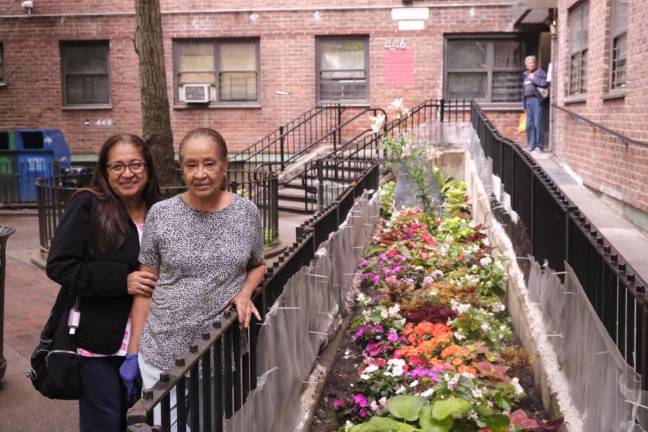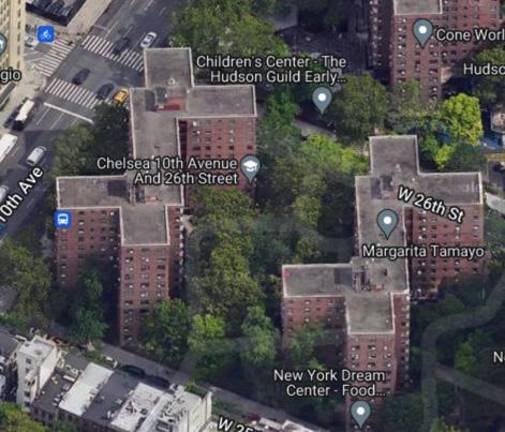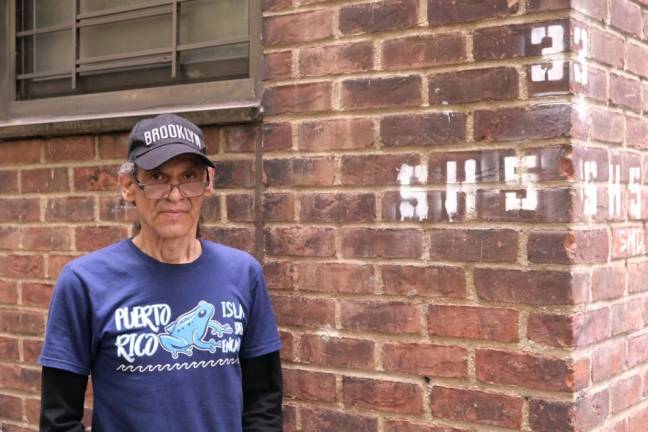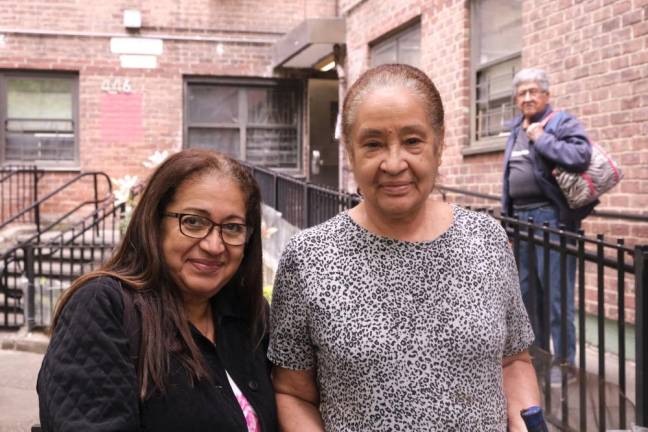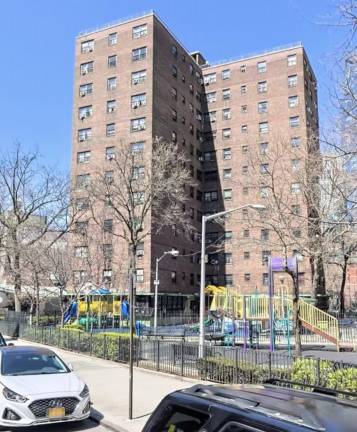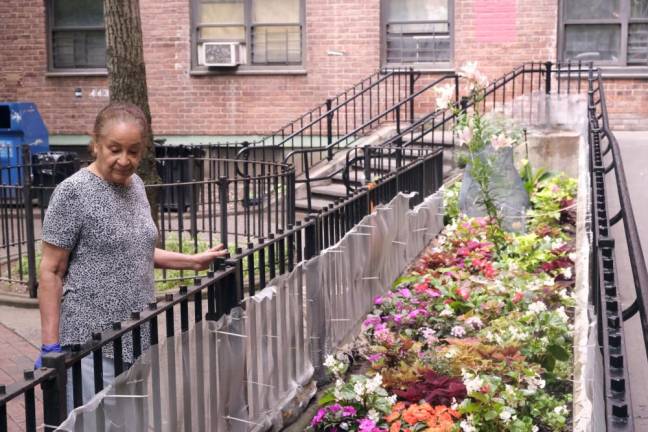Are Residents Really on Board with NYCHA’s $1.5B Plan to Tear Down, Rebuild Public Housing?
The New York City Authority (NYCHA) said it plans to tear down Fulton and Elliot-Chelsea homes for $1.5 billion and build new high rises for residents using private developers. Reports said that 60 percent of residents supported the demolition according to a survey conducted by NYCHAA. But when Chelsea News sent our Spanish speaking reporter on site, she found residents who were against the plan and said many did not comprehend what they were signing when they said they supported demolition.
The New York City Authority (NYCHA) announced on Wednesday, June 21 a plan to invest $1.5 billion to tear down the Section 8 Fulton and Elliott- Chelsea houses housing about 2,000 resident and build new high rises mixed use apartments that would involve subsidized housing and middle and market rate apartments. The project is expected to take an estimated six years to complete.
NYCHA thinks demolition is the only viable solution for the Chelsea-Elliot and Fulton homes is because of the severity of the conditions in the aging developments, where residents regularly encounter leaks, mold, broken elevators and heating problems, as reported by the NYT.
Sources claim the estimated cost to replace the buildings would cost almost as much as rehabilitating the decades-old buildings. NYCHA estimates its total repair bill of replacing every boiler, repairing every elevator, and remediation all lead paint, among other things at about $40 billion.
“They say they are going to knock the buildings down because it’s unstable or broken—but all this time, they didn’t fix anything in the apartment,” Angel Martinez, a resident of a Chelsea-Elliot building said. Martinez claims that there have been problems in the apartment that he and other residents have complained about the damages in the apartment but have they have not been addressed. He says that now it is no surprise that they don’t want to fix the apartment anymore after all this time.
NYCHA can go through with this plan with the building’s conversion to Section 8 housing under the Permanent Affordability Commitment Together (PACT) program. The construction will be handled by two private developers, Essence Development and the real estate giant Related Companies.
The plan will entail having the 2,500 buildings in Chelsea to be replaced. New developments will include dishwashers, washers, dryers, and access to rooftop terraces. The plan will also include the construction of 3,500 new mixed-income apartments. NYCHA says the project can be done within six years and is part of their goal to have more developments under private management.
Roughly 30 percent of eligible residents, or roughly 950 people responded to the survey, and about 60 percent opted for demolition according to week-long surveys, the NYT reported.
“When the residents lead and have a seat at the decision-making table, we can find solutions that prioritize our safety and better our surrounding neighborhoods,” tenant association presidents Miguel Acevedo at Fulton Houses and Darlene Waters at Elliott-Chelsea Houses, who approved the process, said in a joint statement.
“No one knows better than the residents what they need, and they were smart to recognize the potential benefits of completely rebuilding their campus,” Mayor Eric Adams said in a statement.
But there seems to be a disconnect with some residents of the Chelsea-Elliot homes. What Acevedo, Waters, and Mayor Adams don’t know is that some residents are claiming they are not on board. And that those who signed aren’t on board either.
“They say it was 60 percent people signed, but nobody’s in agreement,” 77-year-old Dominican Delfena Plasencea, a resident of the building for 49 years said. “They don’t know what they’re signing.” [translated from Spanish to English]
“The people sign without reading and without knowing what the paper says,” 70-year-old Ecuadorian Maria Moneira pitched in, who has been a resident of the building for 20 years. “Nobody signed that they would demolish the buildings they signed for them to renovate it and that we stayed there.” [translated from Spanish to English]
A big problem that NYCHA does not address is where are the residents going to go while the deconstruction is happening. “Where are they going to send us? The street?” Moneira asked. “They are not going to do this in 2 or 3 months, this will take years.” [translated from Spanish to English]
Martinez says that the housing supervisor told him that they might move them to the Bronx, Queens or Brooklyn. When asked if he would do that, Martinez gave an unspoken no. “I ain’t stupid,” Martinez said. “When they knock the building down and build whatever they build, we ain’t going to come back. That’s for sure.”
Martinez thinks a compensation for moving them out would be fairer. “If they’re going to move us out for whatever reason, they got to pay us with something.”
Many of the people who have lived in the Chelsea-Elliot homes are elderly residents who have lived there for many years, Plasencea says. “All the American people that live here that have worked all their lives, they don’t have where to live,” Plasencea said. “If they take us from here and take us to another place, we’ll already be dead.”
“Burning the building down is like throwing us out of our own home,” Martinez said.
Jonathan Gouveia, NYCHA’s executive vice president for real estate development, told the NYT that there are financial benefits to the demolition. “If you do this all over the city, we’ll be able to provide significantly more affordable housing,” Gouveia said.
What NYCHA is missing however, is the plan of where they are going to relocate the residents that live in the Chelsea-Elliot and Fulton homes and what will happen to them during the demolition process. They are also missing the backstory of some residents on this decision.
“They say it was 60 percent of people signed, but nobody’s in agreement,” 77-year-old Delfena Plasencea, a resident of the building for 49 years said. “They don’t know what they’re signing.”
“If you do this all over the city, we’ll be able to provide significantly more affordable housing,” Jonathan Gouveia, NYCHA’s executive vice president for real estate development said.
